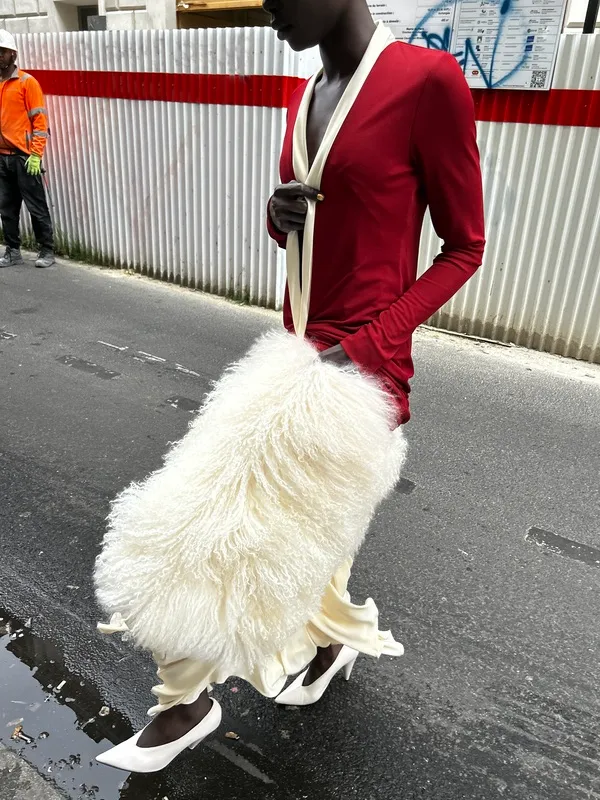
What Is a Cultural Brand? Definition and Examples
The definition of a Cultural Brand: a brand that produces authorial narratives linked to its commercial product. Among the primary examples: Louis Vuitton and Rolex
Cultural Brand: definition and meaning – authorship, financial commitment, brand equity
A precise, technical definition of a Cultural Brand might be as follows: a brand that recognizes the authorship of a narrative, financially supports it, and through that narrative succeeds in boosting the value of its brand equity and potentially showcasing its commercial product.
Authorship
Looking more closely: first and foremost, the brand must acknowledge the authorship of a narrative and respect it, protecting its freedom of expression and extending its reach. This means that a Cultural Brand does not instruct the authors on how their expression should evolve or ask them to adapt their work to a commercial or promotional context.
Financial Commitment
A Cultural Brand financially supports authorship and its expression. We might call this sponsorship, but that term is outdated. It’s more akin to patronage—although historically, patronage can be anonymous. A Cultural Brand must not remain anonymous, its branding activity must be visible. The Cultural Brand should clearly state that it is the one allocating financial resource to strengthen the freedom of expression. The authors, for their part, should feel more empowered in their freedom thanks both to the economic resources provided by the Cultural Brand and to the synergy with the brand’s operations.
Brand Equity
A Cultural Brand primarily focuses on Brand Equity, which can be seen as a Brand structural backbone—much like the skeleton in a human body. Brand Equity is the numerical factor by which, for example, a Gucci ashtray might cost four times what another ashtray of the same fine porcelain might cost. Brand Equity can be identified in a figure, variable and relative, but nonetheless a figure. It is built and evolves through a series of strategies, the first of which is the opposite of all strategies: time.
In short, a Cultural Brand is a brand that financially supports cultural, editorial, authorial expressions with the aim of increasing its own economic conversion coefficient—that is, the Brand Equity.
A Cultural Brand: only historic brands or also emerging brands? The luxury sector
From the above, one might logically deduce that only a historic brand, steeped in decades of tradition, experiences, and success, and financially powerful, can achieve the status of Cultural Brand. Generally, that’s correct. Moreover, a Cultural Brand is almost always a brand that can be defined as belonging to the luxury sector. Why? Because a brand can technically be defined as a “luxury brand” when its Brand Equity is high.
Cultural Brand: examples and references
Louis Vuitton and the Louvre
Let’s cite some examples. Louis Vuitton is the top-earning brand of the LVMH group, which is the world’s leading luxury group in terms of revenue. Were Louis Vuitton to stand alone, its financial figures would be matched only by Chanel—both hovering around 20 billion euros in turnover. As for the group, LVMH recently announced annual revenue of over 80 billion euros. Louis Vuitton is the flagship brand of LVMH, headed by Pietro Beccari, whose executive career began more than twenty years ago in marketing and communication. In interviews, Pietro Beccari presents Vuitton as a Cultural Brand. To support this claim, he can cite collaborations with visual artists on product lines (from Yayoi Kusama to Murakami—the latter relaunched at the start of this year); in sports, investment in sailing for 2024 and patronage of Formula One races—not to mention all the activities of the Fondation Louis Vuitton in both Paris and Venice. If we want a more precise definition of Louis Vuitton as a Cultural Brand—following the ideas outlined above—we can point to its support of the Louvre Museum, to the extent of using the museum’s central courtyard as a runway setting, and even hosting a dinner in the room of the Mona Lisa.
Rolex and the Mentor and Protégé Program
A second example is Rolex: its patronage plan in Italy alone includes the Venice Architecture Biennale and La Scala in Milan. The Mentor and Protégé worldwide program offers concrete support to talented individuals in every field and art form, pairing them with mentors they might otherwise never have had the chance to meet. There’s the Perpetual Planet campaign: the financial support for exploration endeavors. In sports, tennis: champions like Sinner and Alcaraz have their victories celebrated on urban billboards. In these branding efforts, the product—the watch—is not always shown. It doesn’t need to be. Rolex is owned by a charitable foundation.
Cartier and the Venice Film Festival
Another case: Cartier, sponsor of the Venice Film Festival and of a complementary cultural panel—from encounters with Damien Chazelle and Justin Hurwitz to a retrospective on Jean Cocteau; sponsor of the Shanghai Museum, the Victoria & Albert Museum in London, and Palazzo Altemps in Rome—hosting retrospective exhibitions on its own commercial history, which then become settings for other forms of authorial expression; and the Cartier Foundation at the Triennale Milano.
Other cases: Saint Laurent, Prada, Jacquemus
Saint Laurent launched its own in-house film production company—an initiative that channels funding into cinematic art, producing short films by Bret Easton Ellis and Pedro Almodóvar, feature-length films like Parthenope by Paolo Sorrentino. The Saint Laurent movie production company creates films and creative expressions, which can yield significant financial returns: Emilia Perez collects 13 Oscar nominations.
Prada may be the first fashion house to have successfully utilized culture to develop its brand equity over decades of communication—but it has almost always been a matter of culturally “styled” endeavors, not ventures aimed at culture. The result has indeed been tangible, but this relates more to brand reputation than to being a Cultural Brand. The Prada Foundation operates in Milan and Venice, presenting exhibitions and programs that invigorate the local cultural agenda—yet the brand does not engage with autonomous expressions.
Cultural Brand and Celebrity: the stereotype that undermines the attempt – Jacquemus
Visiting the Jacquemus site and clicking on the “About” page, you’ll see that the Jacquemus brand presents itself as a Cultural Brand. By way of proof, show locations are listed—including Villa Malaparte in Capri, used in June 2024. Perhaps a historically significant location alone is not enough to create a real narrative. On the runway, as in the front row, we see well-known faces whose names uneasily could be associated to a Cultural Brand.
Currently, a large portion of the communications budget that brands use to raise Brand Equity and attain the stature of a Cultural Brand is spent on appearance fees for celebrities seated in the front row. Such efforts do not yield the desired outcome. We need not delve into whether these initiatives are worthwhile; here I simply wish to remind everyone that our friends define us. If a brand welcomes TV or digital celebrities whose message centers on looking good morning and night; if a brand endorses the stereotype that a woman’s face needs surgical intervention to tolerate the wisdom of aging, such a brand itself becomes a catalyst for triviality. Even if all this takes place within a setting designed by Italian master architect Adalberto Libera.
Culture Is Sustainability
Does it all seem too easy so far? Let’s raise the bar and go back to the original definitions. I wrote that a Cultural Brand supports a talented expression in its independence; I wrote that the creator of an intellectual work, when supported by a cultural brand, should feel in harmony with the brand’s every initiative.
Culture today is sustainability. Culture does not exist where there is plastic. Cultural Brands should examine their own insides—or rather, dig into the heart of their manufacturing. Cultural Brands must be willing to admit the contradiction of consumerism they represent, through which the textile industry continues to use polyester and produce microplastics.
Sustainability is a compromise—true—but at least the message can be meaningful. The message must be positive. What does positive mean? It’s a general term. All three words—culture, sustainability, positivity—are general terms. Still, there’s no point celebrating our past, our tradition, our art, and our beauty if our efforts do not lead to a pragmatic vision of the future. Culture, sustainability, positivity—let’s add “future” to the list. Again, all vague, all general terms. Try taking a breath. Let’s ask us if every action we take, every object we purchase, every day we live, manages to respect these admittedly broad terms. Culture, sustainability, positivity. We are only drops of clean water: together, we are an ocean.
Carlo Mazzoni








